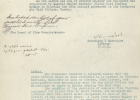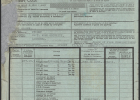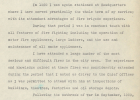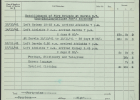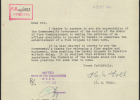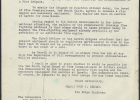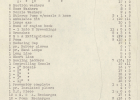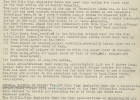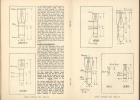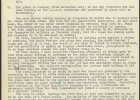Bombers arriving
On 19 February 1942 at 9.58am Japanese bombers began to arrive over Darwin in the Northern Territory of Australia in the first of two attacks. This first attack lasted approximately 40 minutes and bombs were dropped on the Allied warships and merchant vessels in Darwin Harbour, the RAAF Base and civilian airfield outside of town, along with the Army Barracks and oil store. The second attack at about midday again concentrated the bombing on the RAAF Base.
It is estimated that approximately 683 bombs were dropped on Darwin over the two attacks. Between 250-320 people were killed and another 300-400 were wounded. In Darwin Harbour 10 ships were sunk and another 25 ships were damaged while at the airfields 23 aircraft were destroyed. Most of the military and civil facilities in the town were also destroyed. Between 4 March 1942 and 12 November 1943 there were 62 more bombing raids in the Northern Territory and parts of Western Australia.
Helping Darwin – NSW Government and the Northern Territory, 1940-42
Early in World War II Darwin was considered an ideal location for an Allied base from which troops could be deployed to defend the Dutch East Indies (modern-day Indonesia) from the expected Japanese forces. A major problem though, was the isolation of Darwin. This meant that the town relied heavily on the sea for the transport of both goods and men for labour. From mid-1940 roads, bridges, airfields and other infrastructure in the Northern Territory were built for the Commonwealth Government by various state governments, including NSW. In particular, NSW helped to establish the Darwin Fire Brigade late in 1941.
Images used in this Gallery
1. Urgent supply of fire equipment, 1941 – NRS 476 [20/14783 file 599 Darwin]
2. QANTAS consignment note – NRS 476 [20/14783 file 599 Darwin]
3. Pye’s time in Darwin – NRS 519 [14/1725], Personal file for Chief Officer HW Pye, 1949
This is page one of a three page application for the position of the NSW Fire Commissioners Board’s Inspectional Officer. Towards the bottom of the page Horace Wentworth Pye describes his roles during the War, including his time in Darwin. Pye was in Darwin from 14 October to 16 November 1941 and he was responsible for recruiting and training part-time fire fighters for Darwin’s newly established Fire Brigade and lecturing on anti-air raid precautions. Pye retired in 1963.
4. Pye’s expenses for time in Darwin, 1941 – NRS 476 [20/14783, file 599 Darwin]
5. Commonwealth Government thanks NSW Board of Fire Commissioners – NRS 476 [20/14783, file 599 Darwin, letter 41/5319]
Thank you letter from HS Foll, Federal Minister of Interior to HM Webb, Secretary of Board of Fire Commissioners dated 1 October 1941. In the letter the NSW Board of Fire Commissioners is thanked for providing an officer (HW Pye), a fire engine (a Dennis ‘Light 4’, No 269) and equipment for the establishment of the Darwin Fire Brigade. The Board sent a second fire engine (also a Dennis ‘Light 4’ No 269A) in February 1942 to Darwin.
6. Second fire engine required, 1942 – NRS 476 [20/14783, file 599 Darwin]
Copy of a letter from John Dedman, Prime Minister’s Dept to Premier of NSW, 23 Jan 1942, asking for a second fire engine to be supplied for Darwin. The letter reflects the growing concern of the Japanese push into the Pacific region following the bombing of Pearl Harbour in December 1941. Singapore was to fall to the Japanese on 15 February 1942. Dedman foreshadows what was to happen the next month when he writes “Darwin is in danger of an attack from the air.”
7. Dennis goes north – NRS 476 [20/14783 file 599 Darwin]
List of fire equipment forwarded to Darwin, including a Dennis ‘Light 4’ Engine No 269A. This second fire engine was despatched from Sydney on the “SS Montora” on 25 February 1942. The ship was held up in Townsville due to the bombing and ‘Dennis’ was transferred to a smaller vessel, the “Tulagi” before arriving in Darwin on 7 April 1942. “Dennis’ was taken over by the Navy as the Darwin Fire Brigade had been disbanded. The first fire engine was used by the Army and stationed at Larrakeyah.
8. Guyer report on effects of bombing of Darwin – NRS 476 [20/14783 file 599 Darwin] page 1 of 5
Memo from Lindsay Gordon Guyer, Sub-station Officer to the Chief Officer of the NSW Fire Brigade, dated 25 April 1942. Guyer arrived in Darwin on 26 March 1942 and spent 10 days evaluating the types of bombs used and their effects on different materials. Guyer experienced seven air raids during his visit. He recorded the effects of 500kg High Explosive and 60kg High Explosive bombs used during the first raid, along with incendiary, smoke and anti-personnel bombs. The Federal Department of Home Security had asked the NSW Board of Fire Commissioners to select an officer to be sent to Darwin with RE McMillan, a civil engineer from Sydney. The Dept of Home Security needed information from the Darwin raids to assess existing anti-air raids plans for Eastern Australia.
9. High explosive bombs – NRS 19987 [6/16010.4], “Action: Journal of National Emergency Services NSW”, Vol 2, No 5. Feb 1943, pp 34-35.
10. Northern Territory evacuation, 21 February 1942 – NRS 9771 [10/27336 file 41M837] page 9 of 12
Memo by J Laws, Assistant Bridge Engineer from the NSW Department of Main Roads, dated 9 March 1942. Laws arrived in the Northern Territory on 13 February 1942 to survey sites for bridges. Laws writes on 21 February 1942 he wanted to return to Darwin but because of the bombing he ended up travelling from Larramar [Larrimah] to Alice Springs with a number of Darwin evacuees. He comments on the lack of information available to him and the uncomfortable journey to Alice Springs during which everything of value was either broken or stolen.
Further reading
- See NAA: Fact Sheet 195 The bombing of Darwin
- NAA RecordSearch – NAA:A431, 1948/215, Fire Brigade Darwin N.T. Establishment of, 1938-50
- Museum of Fire, Penrith, NSW
- Northern Territory Fire & Rescue: Our History
Research by
Research for the World War II:1942 Gallery was completed by Jennifer Sloggett of State Records NSW.
